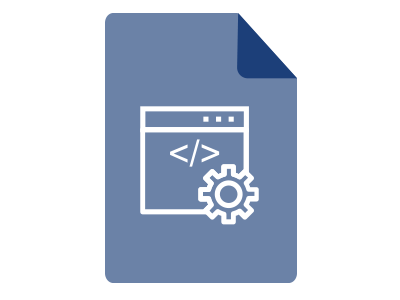Data Science with Python
- Introduction to Python for Data Science
- OOP concepts, expressions and functions
- What is SQLite in Python, operations and classes
- Creating Pig and Hive UDF in Python

Overview
Data Science with Python course enables you to master Data Science Analytics using Python. This Python Course will also help you master important Python programming concepts such as data operations, file operations, object-oriented programming and various Python libraries such as Pandas, Numpy, Matplotlib which are essential for Data Science.
Start your path to becoming a Data Scientist, using the power of Python. As yet, companies are able to capture only a fraction of the potential locked in data, and data scientists who are able to reimagine business models by working with Python are in great demand. Analyze data, create beautiful visualizations, and use powerful machine learning algorithms to convert your data into meaningful statistics that can help organizations achieve business outcomes.
Course Outline
Introduction to Python
- Overview of Python
- The Companies using Python
- Different Applications where Python is used
- Discuss Python Scripts on UNIX/Windows
- Values, Types, Variables
- Operands and Expressions
- Conditional Statements
- Loops
- Command Line Arguments
- Writing to the screen
Sequences and File Operations
- Python files I/O Functions
- Numbers
- Strings and related operations
- Tuples and related operations
- Lists and related operations
- Dictionaries and related operations
- Sets and related operations
Deep Dive – Functions, OOPs, Modules, Errors and Exceptions
- Functions
- Function Parameters
- Global Variables
- Variable Scope and Returning Values
- Lambda Functions
- Object-Oriented Concepts
- Standard Libraries
- Modules Used in Python
- The Import Statements
- Module Search Path
- Package Installation Ways
- Errors and Exception Handling
- Handling Multiple Exceptions
Introduction to NumPy, Pandas and Matplotlib
- NumPy – arrays
- Operations on arrays
- Indexing slicing and iterating
- Reading and writing arrays on files
- Pandas – data structures & index operations
- Reading and Writing data from Excel/CSV formats into Pandas
- matplotlib library
- Grids, axes, plots
- Markers, colours, fonts and styling
- Types of plots – bar graphs, pie charts, histograms
- Contour plots
Data Manipulation
- Basic Functionalities of a data object
- Merging of Data objects
- Concatenation of data objects
- Types of Joins on data objects
- Exploring a Dataset
- Analysing a dataset
Introduction to Machine Learning with Python
- Python Revision (numpy, Pandas, scikit learn, matplotlib)
- What is Machine Learning?
- Machine Learning Use-Cases
- Machine Learning Process Flow
- Machine Learning Categories
- Linear regression
- Gradient descent
Supervised Learning – I
- What are Classification and its use cases?
- What is Decision Tree?
- Algorithm for Decision Tree Induction
- Creating a Perfect Decision Tree
- Confusion Matrix
- What is Random Forest?
Dimensionality Reduction
- Introduction to Dimensionality
- Why Dimensionality Reduction
- PCA
- Factor Analysis
- Scaling dimensional model
- LDA
Supervised Learning – II
- What is Naïve Bayes?
- How Naïve Bayes works?
- Implementing Naïve Bayes Classifier
- What is Support Vector Machine?
- Illustrate how Support Vector Machine works?
- Hyperparameter Optimization
- Grid Search vs Random Search
- Implementation of Support Vector Machine for Classification
Unsupervised Learning
- What is Clustering & its Use Cases?
- What is K-means Clustering?
- How does K-means algorithm work?
- How to do optimal clustering
- What is C-means Clustering?
- What is Hierarchical Clustering?
- How Hierarchical Clustering works?
Association Rules Mining and Recommendation Systems
- What are Association Rules?
- Association Rule Parameters
- Calculating Association Rule Parameters
- Recommendation Engines
- How does Recommendation Engines work?
- Collaborative Filtering
- Content-Based Filtering
Reinforcement Learning
- What is Reinforcement Learning
- Why Reinforcement Learning
- Elements of Reinforcement Learning
- Exploration vs Exploitation dilemma
- Epsilon Greedy Algorithm
- Markov Decision Process (MDP)
- Q values and V values
- Q – Learning
- α values
Time Series Analysis
- What is Time Series Analysis?
- Importance of TSA
- Components of TSA
- White Noise
- AR model
- MA model
- ARMA model
- ARIMA model
- Stationarity
- ACF & PACF
Model Selection and Boosting
- What is Model Selection?
- The need for Model Selection
- Cross-Validation
- What is Boosting?
- How Boosting Algorithms work?
- Types of Boosting Algorithms
- Adaptive Boosting
Key Features
Who should attend

- 32 hours of instructor-led training
- Course Materials
- Course Completion Certificate
- 100% Money Back Guarantee
- Flexibility to choose classes
- Post training Support
- Learn Supervised and Unsupervised Machine Learning Algorithms
- 32 PDUs
- Interactive Statistical Learning with advanced Excel
- Data Science with Python Certified trainer
- Industry wise real life examples
- Expert advice and tips to apply theoretical skills
- 10% discount on any Online Course
- Those Interested in the field of data science
- Those looking for a more robust, structured Python learning program
- Those wanting to use Python for effective analysis of large datasets
- Software or Data Engineers interested in quantitative analysis with Python
- Data Analysts, Economists or Researchers
What you will learn
- Introduction to Python for Data Science
- OOP concepts, expressions and functions
- What is SQLite in Python, operations and classes
- Creating Pig and Hive UDF in Python
- Deploying Python for MapReduce programming
- Real-world Python for Data Science projects
